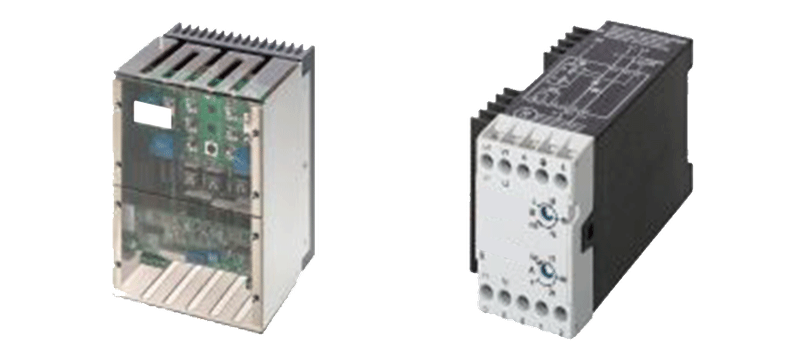DC Injection Brakes have emerged as a powerful and efficient method for stopping AC electric motors, especially in industrial machinery. These braking systems not only enhance operational safety but also offer improved control during motor shutdown. In this article, we will provide a comprehensive analysis of the DC injection braking method, how it works, its advantages, limitations, and key industrial applications.
Understanding the DC Injection Braking Principle
When an AC induction motor needs to be stopped quickly and safely, DC injection braking is one of the most effective methods. Instead of relying on traditional friction-based braking systems, this technique injects a direct current (DC) into the motor windings after the AC supply is turned off.
This injected DC current creates a stationary magnetic field within the stator. As the rotor continues spinning through this stationary field, eddy currents are induced in the rotor, which in turn generate a magnetic field opposing its rotation. This results in a braking torque that decelerates the rotor quickly and smoothly.
How DC Injection Brakes Work in Detail
To understand the working mechanism of DC injection brakes, it’s important to look into the sequential steps involved:
- AC Supply is Disconnected: Once the stop command is issued, the AC supply to the motor is immediately cut off.
- DC Voltage is Injected: A DC voltage is then applied to the motor windings using a controller or braking module.
- Braking Torque is Produced: The stationary DC field interacts with the moving rotor to create resistance, converting kinetic energy into heat.
- Controlled Deceleration: The braking effect is precisely adjustable based on the amount and duration of the injected DC current.
- Safe Motor Shutdown: After the motor stops, the DC current is turned off to prevent overheating.
Key Components of a DC Injection Braking System
A typical DC injection braking system includes the following components:
- Braking Controller: Manages the switching between AC and DC supply.
- DC Power Supply Unit: Converts AC to DC and regulates voltage levels.
- Contactors/Relays: Enable controlled application and disconnection of DC.
- Overload and Thermal Protection: Prevents overheating due to prolonged braking cycles.
These components work in harmony to ensure fast, safe, and energy-efficient braking.
Benefits of DC Injection Brakes in Industrial Applications
DC Injection Brakes offer several advantages that make them an ideal choice in industrial setups:
1. Non-Contact Braking
Since there is no mechanical contact involved (like in friction brakes), wear and tear are minimized, leading to reduced maintenance.
2. Precise Stopping Control
DC injection braking allows for accurate control over stopping time, making it perfect for high-precision applications like CNC machines, conveyors, and textile machinery.
3. Improved Safety
Rapid deceleration reduces the risk of accidents, especially in emergency situations or where quick motor stopping is critical.
4. Compact and Cost-Effective
Compared to mechanical braking systems, DC injection brakes are more compact and often more cost-effective to install and maintain.
5. Quiet Operation
The absence of friction components means silent braking, enhancing the workplace environment.
Limitations of DC Injection Braking
While DC injection brakes offer numerous advantages, they also have certain limitations that must be considered:
- Heat Generation: Prolonged DC injection can cause motor overheating, especially if proper thermal protection is not in place.
- Not Suitable for All Motors: This method is best suited for squirrel cage induction motors and may not be effective for synchronous or DC motors.
- Limited Braking Torque: Compared to dynamic or regenerative braking, the braking torque may be lower, making it unsuitable for applications needing very high braking force.
Industrial Use Cases of DC Injection Brakes
1. Conveyor Systems
In conveyor belts where precision stopping is crucial to prevent material spillage or jamming, DC injection brakes offer reliable control.
2. Woodworking and Cutting Machinery
For circular saws and cutting machines, DC braking ensures the blade stops quickly after power is turned off, enhancing operator safety.
3. Textile Manufacturing Equipment
The high-speed rollers in textile machines require quick stopping to avoid material wastage. DC injection offers a seamless solution.
4. Elevators and Hoists
Safety is paramount in lifting applications. Controlled braking ensures loads are stopped gently and precisely.
5. Packaging Lines
Automated packaging lines benefit from precise stop/start sequences, which DC injection braking systems efficiently manage.
How to Choose the Right DC Injection Brake for Your Needs
When selecting a DC injection brake, consider the following:
- Motor Specifications: Voltage, power rating, and frame size determine the required braking current and voltage.
- Duty Cycle Requirements: Understand how often braking is required and for how long.
- Thermal Management: Ensure the braking unit has adequate thermal protection or heat dissipation features.
- Compliance and Certifications: For industrial environments, ensure the system complies with relevant safety and EMC standards.
Maintenance Tips for DC Injection Braking Systems
- Regular Inspection: Check all electrical connections and ensure the braking module is functioning correctly.
- Monitor Heat Levels: Use thermal sensors or IR thermometers to monitor heat buildup during repeated braking cycles.
- Firmware and Settings: Periodically review controller firmware and adjust braking parameters for optimal performance.
- Dust Protection: Install systems in well-ventilated, dust-free enclosures to avoid malfunction.
Future Trends in DC Injection Braking Technology
As industries move towards smarter and safer automation, DC injection brakes are evolving too. Key trends include:
- Integration with PLCs and IIoT Systems
- Energy-Efficient Braking Modules
- Hybrid Braking Solutions Combining Dynamic and DC Injection
- Enhanced AI-based Predictive Maintenance
These advancements promise to make braking more intelligent, responsive, and adaptive to varying load conditions.
Conclusion
DC injection braking is a proven, efficient, and safe method to decelerate AC motors, especially in industrial applications demanding rapid and reliable stopping. Its ability to provide non-contact, low-maintenance braking makes it a favored option for engineers and plant managers. By understanding its operation, benefits, and correct implementation, industries can significantly enhance safety, efficiency, and control in motor-driven systems.


